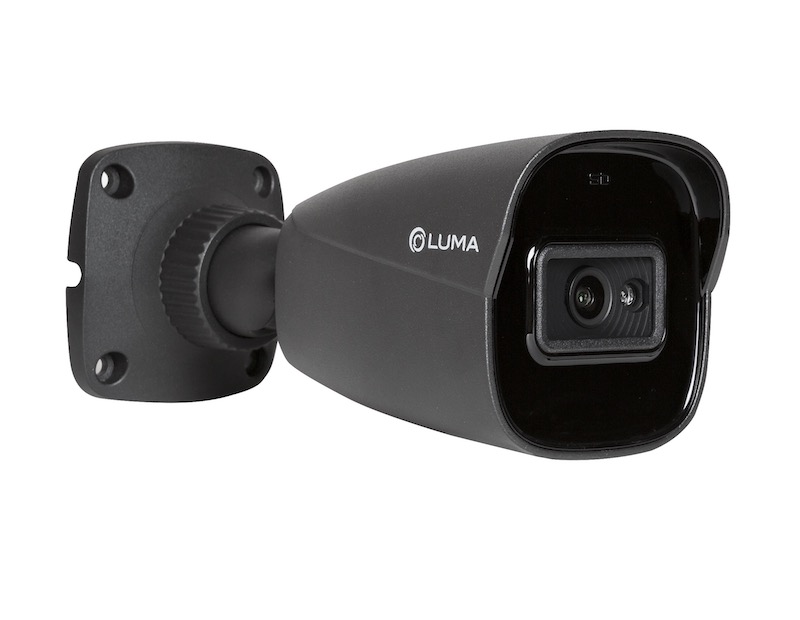By deploying artificial intelligence directly within cameras and security systems, homeowners can meticulously monitor their properties, reduce false alarms, and automate responses.
With applications spanning across social media, email, video communication, streaming media, and AI chatbots, the profound influence of cloud-based AI is undeniable. However, as we witness the ongoing expansion of the home security market — forecasted to surge nearly 20 percent annually through 2030 — critical inefficiencies within cloud-based AI become apparent.
The solution lies in processing AI at the edge, a transformative approach that enhances efficiency and responsiveness by bringing intelligence closer to where it is needed most: within the confines of our clients’ homes.
The Benefits of Home Security at the Edge
Smart home integrators understand the concept of “the edge” better than most. It’s where much of their technology has always lived: IP cameras, occupancy sensors, alarms, access controls. Once network-enabled, these smart home devices become many of the “things” on the Internet of Things (IoT), doing their work far from control rooms and data centers.
With the advent of AI, many industries have embraced edge computing to put more powerful IoT devices in the field, closer to where data is generated and used. For example, industrial manufacturing uses AI alongside robotics to identify issues more quickly on the shop floor. Healthcare uses AI embedded in imaging systems to spot life-threatening conditions faster and improve patient outcomes.
In the case of home security, detecting threats and initiating a response — even before a control center can act — requires AI built into security systems themselves, specifically a new class of AI processors designed for smart cameras and video management solutions.
Security systems that aren’t equipped with AI typically rely on motion detectors to identify threats, which can lead to many false alarms due to branches moving in the wind, rain, animals, etc. With AI, threat detection becomes 100% accurate, and no cat or leaf will be misidentified as human — completely eradicating false positives and false negatives.
Because home security cameras often do their work in the dark, they need AI processors that can operate in low-light scenarios by drastically enhancing the picture before interpreting what they see. AI processing on the device can allow for images that are dark to become clear and visible.
For home security system users, night is one of, if not the most, critical time for an effective security system, and this breakthrough allows for security systems to remain consistent and effective, even when in a dark area.
Equipping Smart Homes with Edge AI Solutions
Moving AI to the edge of home security requires a different way of processing information. Today’s edge AI processors are designed to handle neural networks, which manage data like synapses in a brain, rather than forcing it through a linear pipeline.
In practice, such an efficient architecture is especially fitting for security systems. Not only do AI processors run AI algorithms more rapidly, but they do it using less power, which is important when installing cameras throughout a home and property. The most important thing: No need to send video data to cloud servers for processing.
There are a couple of ways to deploy edge AI in smart homes. It can be integrated into devices themselves (cameras, sensors) or into a gateway system located in a data closet (a video management system — VMS or network video recorder — NVR). Such gateways, often with multiple edge AI processors installed, take video streams from regular IP cameras and apply AI algorithms for image enhancement, detection, and identification.
Tailoring Edge AI Solutions with Home Security Demands
Smart home professionals play a significant role in deploying edge AI by understanding owners’ requirements and applying the best available solution. Companies like Hailo manufacture AI processors that are purpose-designed to run AI algorithms quickly and accurately while using less power and eliminating the need for active cooling, making them suitable for smart homes.
The AI processors are divided into two classes designed to answer all AI needs of a home security system: AI vision processors that can be integrated directly into smart cameras and AI accelerators that are fitted into gateways and NVRs to support the host processor with AI compute power. For example, Snap One’s Luma Insights Platform is powered by Hailo-8 AI processors to provide AI-enhanced security to Control4 automation and networking systems.
Actual use cases of edge AI in smart homes typically fall into two buckets. The first involves making decisions and acting faster. Think of a home in a busy neighborhood or city. When an edge AI security device detects suspicious activity, for example, it can immediately trigger alerts or initiate security measures.
The second bucket comprises solutions to intelligently process data for later evaluation. The fact is, despite advances in AI, not all home security video can be analyzed in real time. Much is stored and examined — by the homeowner, integrator, or service provider — if an event is noticed. But with edge AI, such video can be processed, analyzed, and categorized before it’s stored so when someone must go back and look for a person or event, it’s far more efficient. For instance, they can apply search terms to processed and stored video (show all “unknown persons” or “men wearing hats”) rather than pore through all the footage.
Ultimately, use cases are driven by need and budget. Certain critical, real-time security solutions benefit from edge AI built directly into new cameras and other detection devices. Others, including existing camera deployments, are suited to cost-effective edge boxes for aggregating and analyzing streams. Most home security solutions will fall in the middle, with some combination of AI devices and aggregation boxes.
As smart home integrators navigate the dynamic home security landscape, incorporating edge solutions ensures that systems are not only efficient but also tailored to every homeowner’s individual needs.
The ability to deploy AI directly at the network edge not only improves response times but also minimizes reliance on external servers, contributing to a more streamlined and reliable security infrastructure. Whether it’s the immediate detection of suspicious activities or the intelligent processing of stored data, edge AI is a cornerstone in the ongoing evolution of sophisticated and responsive home security solutions.









